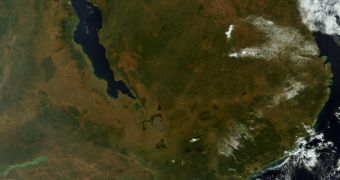A rift in eastern Africa is most likely the place where a new ocean will begin to take shape in the future, scientists confirm after serious investigations. The formation started “unzipping” in 2005, when it reached its current length, of about 35 miles, within only a few days. The rip began when the Dabbahu volcano, located at the northern end of the Ethiopian formation, started erupting and pushing the tectonic plates at the location away from each other. The same type of activity is also parting the Red Sea at this very instance, geologists say, quoted by LiveScience.
In a statement released yesterday, scientists essentially confirmed an idea that was first proposed a couple of years ago. However, the proposal sparked heated debates in the international scientific community, because the pieces of evidence at the time were scarce at best, and the rift had not been studied in detail. Following the new research, the conclusion is nearly unanimous that the activity at the rift will continue on such a path that the area will be flooded in the future and then made to communicate with the Indian Ocean.
“We know that sea floor ridges are created by a similar intrusion of magma into a rift, but we never knew that a huge length of the ridge could break open at once like this,” study co-author and University of Rochester Earth and Environmental Sciences Professor Cindy Ebinger says. “The whole point of this study is to learn whether what is happening in Ethiopia is like what is happening at the bottom of the ocean where it's almost impossible for us to go,” the scientist adds. At the bottom of the Atlantic Ocean, a similar rift is generating a new sea-floor crust, and is pushing the large tectonic plates on which Europe, Africa and the Americas lie away from each other.
“We knew that if we could establish that, then Ethiopia would essentially be a unique and superb ocean-ridge laboratory for us. Because of the unprecedented cross-border collaboration behind this research, we now know that the answer is yes, it is analogous,” Ebinger reveals. The new research has been led by Addis Ababa University Professor Atalay Ayele, who gathered seismic evidence to support the idea from experts in Eritrea and Yemen, two neighboring countries. Experts believe that, in about one million years, the Red Sea will pour into the new rift, essentially connecting the Red Sea and the Gulf of Aden, and creating a new ocean.

 14 DAY TRIAL //
14 DAY TRIAL // 
